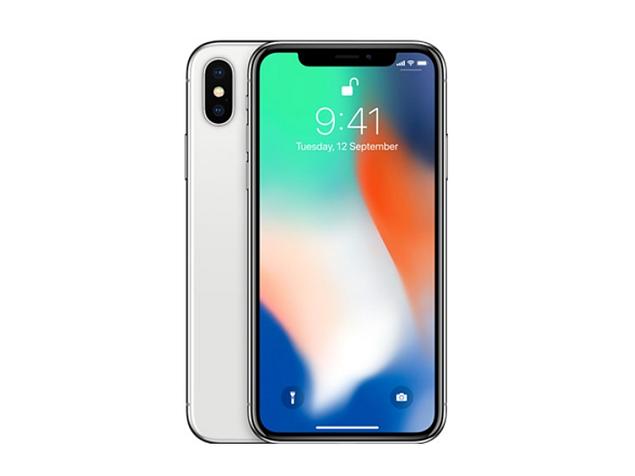You don’t need an iPhone X
Are you willing to drop $1000 on the latest phone? You shouldn’t be.
October 18, 2017
The iPhone X is the smartphone market’s newest attempt to make phones even more expensive than they ever needed to be. Flagship smartphones like the Samsung Galaxy S8 and iPhone 8 already sell themselves on being high end devices, and the $700 asking price reflects that. So when Apple announced a new, even higher end smartphone for $1000 last month, it took the world by surprise. With a new iPhone pushing prices further than ever before, are you getting your money’s worth when compared to cheaper alternatives?
First, let’s have a look at the difference between the iPhone 8 and X. The biggest selling point and the center of the marketing strategy behind the X is its screen that goes close to nearly every edge of the front surface. It’s definitely a beautiful design, but it’s not much different than many of the screens of competing devices. Samsung’s Galaxy S8 has a very similar look, with the screen going all the way to the sides and close to the top and bottom of the device. The iPhone X boasts its screen to be very crisp, even though the resolution per inch is similar to many Android phones that have been on the market for years. Not to say the design isn’t unique and inventive, but it’s a weak justification when other phones offer something similar for less.
The other selling point behind the iPhone X, Face ID, does a better job selling the phone. It’s a facial scanner used for unlocking and head tracking, a unique feature that they seem to be taking a risk on. I respect the move, but I have to question how well this will work, and how practical it would actually be if it does. Apple has decided to drop Touch ID in favor of this. The thing is, Touch ID allowed people to unlock their phone by the time it took them to take it out of their pocket and into their view. Considering the facial recognition can’t actually be used until the phone is already upright and facing the user’s head, it will have to work very quickly to even compare to Touch ID, and since this is the first generation to ever implement this new technology, I have a sneaking suspicion that the feature won’t be as consistently functional.
So after these two big pushes, what’s left between the iPhone X and Apple’s other options? Well, the size is in between the iPhone 8 and 8 Plus, a bit larger than the 8 but significantly smaller than the Plus. The screen on the X larger than both when measured corner to corner in size as well as resolution. The contrast ratio is much higher, meaning the blacks on the screen will be much darker, but the max brightness is the same. All cameras are identical to the iPhone 8 Plus’, with the exception of the Face ID scanner, and the battery life is slightly lower. Other than that, it’s identical to the other current iPhone models.
After seeing so much similar between phones with very different prices, I took a look to see if the same was happening on the Android side. The Galaxy S8 is equipped with an 8 core processor, which after some digging I’ve identified as Qualcomm’s Snapdragon 835. What’s awfully suspicious about this is the OnePlus 5, a phone starting at $480, has the exact same chip. What else could the money go to? Well, OnePlus’ offering has a 1080p screen, which isn’t as high resolution as the S8. But this screen is even higher resolution than the iPhone 8, and the same as the 8 Plus. It almost seems arbitrary how much you have to pay for these highly similar phones.
This whole thing brings into question why smartphones cost so much to begin with. With some of the highest end smartphones being standard for many average people, do they even need it? I know I mainly use my phone to browse and post to social media, and many South students do the same. Smartphone games tend to be very simplistic, so we’re not in dire need of new processors. It’s good to have a nice camera to take pictures, but nice cameras don’t cost very much, and neither do touchscreens.
So after looking at all these phones, is there really a huge difference? A smartphone is a smartphone, and as we’ve seen, one under $500 is just as proficient at handling the day to day tasks a phone normally must perform. I have a question for you, the reader. Do you know what your phone costs? And would you pay that, knowing you can get a phone that does what you want it to for much less? After learning all about the phone market, I sure wouldn’t want to buy a phone as expensive as the iPhone X. Considering the alternatives, I don’t think you should either.


